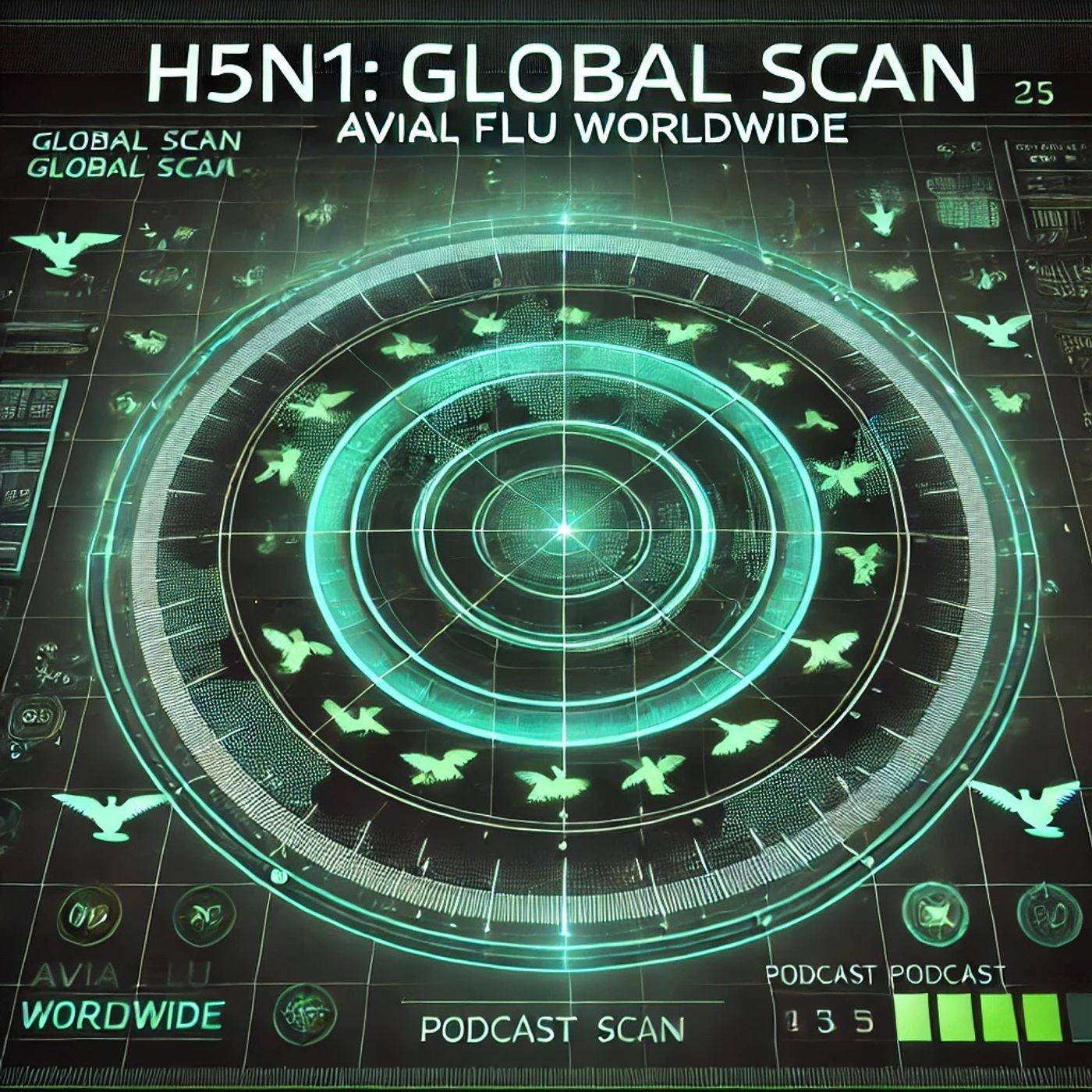Podcast Episode Details
Back to Podcast Episodes
H5N1 Global Crisis: Avian Flu Spreads Worldwide, Threatening Agriculture and Human Health in 2025
This is H5N1 Global Scan: Avian Flu Worldwide. I’m your host, bringing an international perspective on the latest concerns and developments surrounding avian influenza. Let’s break down the state of H5N1 as of today, October 3, 2025.
First, a global overview. The highly pathogenic H5N1 avian influenza has caused outbreaks in nearly every continent except Australia, with the virus emerging in wild birds, poultry, mammals, and even humans. The World Health Organization reports nearly a thousand human cases since 2003, with a tragic case fatality rate close to 49 percent, highlighting its severe risk. The Pan American Health Organization reports thousands of recent animal outbreaks in the Americas, including a concerning rise in infections among dairy cattle in the United States, marking a new chapter for the virus’s spread.
In Africa and Asia, recurring mass die-offs of wild birds and poultry remain a major concern. Southeast Asia continues to report human infections, often following direct contact with sick poultry. In Cambodia and Vietnam, clusters of cases linked to reassorted viral strains underline the virus’s adaptability. China and India have also confirmed fatal human cases in 2025, while places like the Philippines face recurring farm outbreaks that have led to export bans.
Over in Europe, outbreaks have affected both livestock and wild mammals. The United Kingdom recorded not only human infections but spillover into sheep, which developed milk and mastitis problems similar to infected cattle. Across South America, countries like Argentina and Chile saw animal outbreaks with sustained risks to farmworkers and the consumer supply chain.
The Americas have witnessed the virus jump species—from birds to mammals—most notably in the US, where more than 900 dairy herds have been affected since 2024. The Centers for Disease Control and Prevention is monitoring the situation closely, and the US Department of Agriculture has ramped up surveillance and herd isolation protocols.
Internationally, the WHO and the Food and Agriculture Organization have consistently sounded the alarm about H5N1’s pandemic potential, stressing the importance of enhanced surveillance, rapid reporting, and transparent data sharing. The FAO highlights the role migratory birds play in virus transmission across continents.
Collaboration is underway: global genomic surveillance networks, spearheaded by initiatives in Europe and North America, are mapping virus evolution and resistance. Vaccine development is advancing, with the US and European Union accelerating testing of newer, broader-spectrum candidates. However, distribution remains uneven—lower-income countries in Africa and Southeast Asia often lack access to effective vaccines, a gap WHO calls urgent to address.
Trade faces substantial disruptions. Outbreaks trigger swift bans on poultry exports, loss of livestock, and steep drops in consumer confidence. The World Organization for Animal Health notes that countries with robust disease tracking and culling programs—like France and Japan—have managed to curtail spread more effectively than nations with limited resources and infrastructure.
National responses differ: the US and EU focus on aggressive containment in affected farms and rapid vaccine deployment, while Southeast Asian nations prioritize community education and market controls. African nations, with limited resources, often depend on international aid for outbreak management.
In closing, H5N1 poses a fast-evolving, global challenge. Vigilance, cooperation, and investment in science remain vital for prevention and control. Thanks for tuning in—come back next week for more global health perspectives. This has been a Quiet Please production, for more check out QuietPlease Dot AI.
For more http://www.quietplease.ai
Get the
Published on 5 days, 16 hours ago